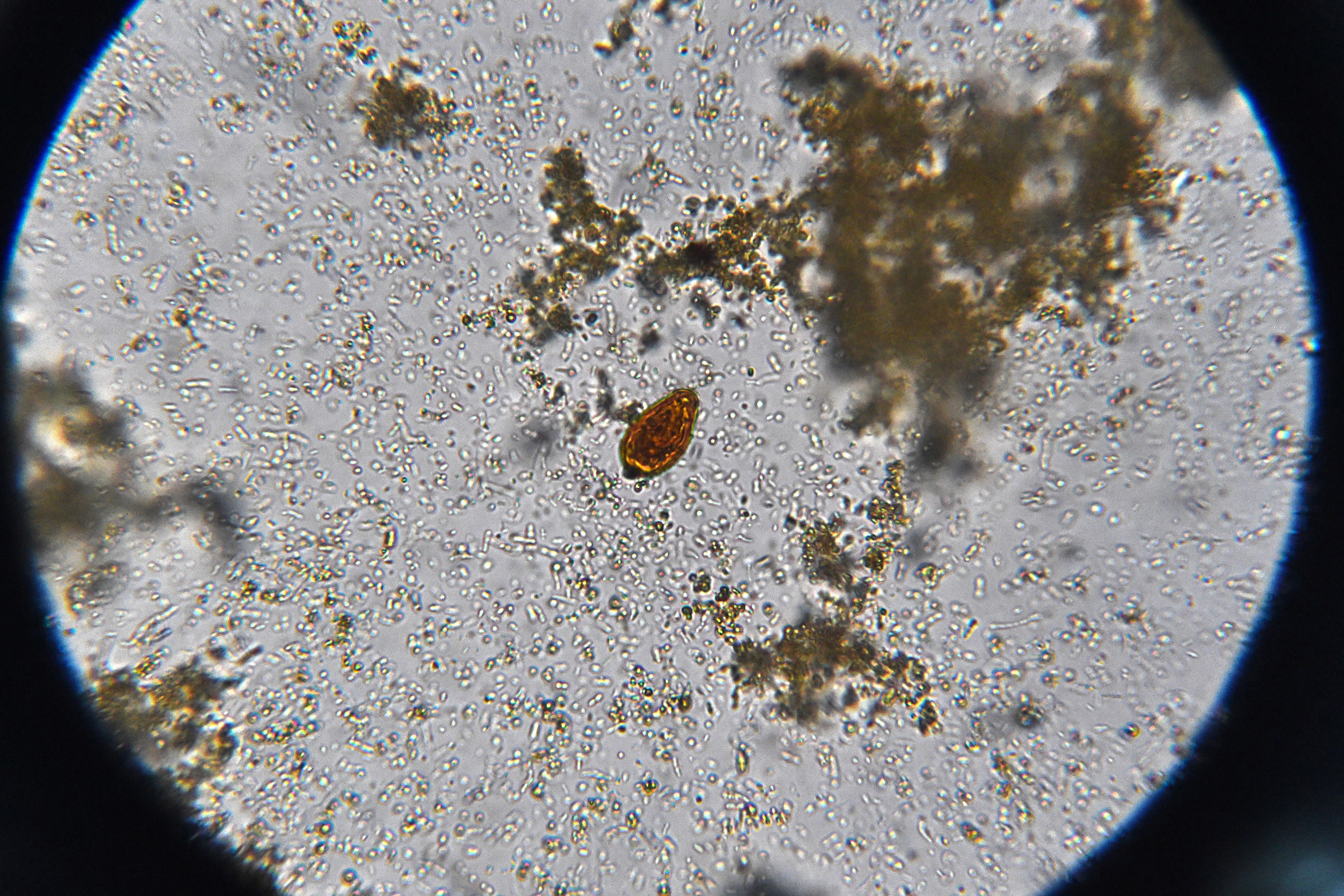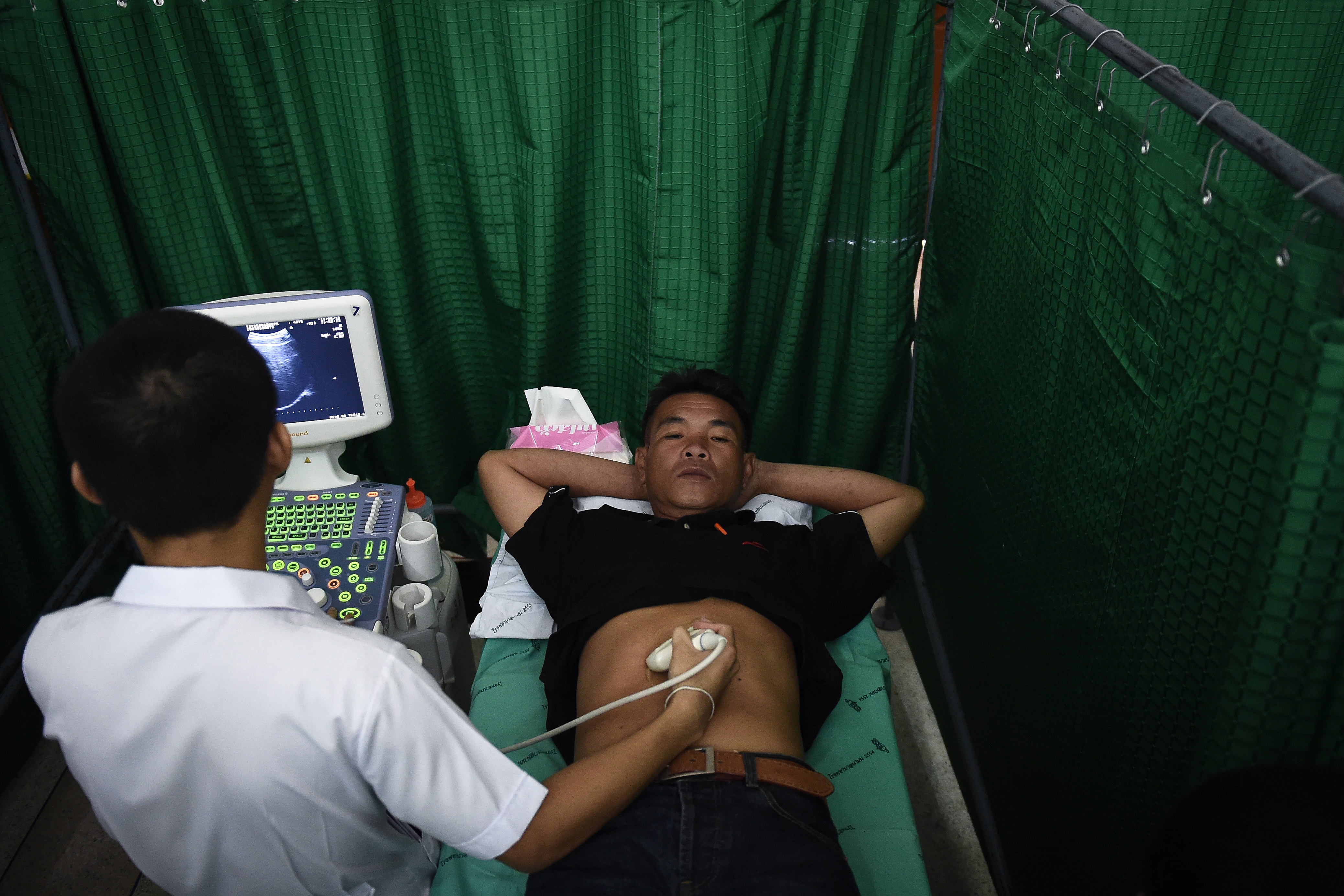In this May 19, 2017 picture shows a man getting an ultrasound during a CASCAP (Cholangiocarcinoma Screening and Care Program) event in the northeastern Thai province of Kalasin. (AFP Photo/Lillian Suwanrumpha)
The global market for bile duct cancer treatments is anticipated to bring in revenues worth a little over US$168 million in 2017, according to Persistence Market Research (PMR).
Apart from rising incidence of bile duct cancer across the Asia Pacific, Middle East and Africa region, it said increasing healthcare spending is also expected to drive the demand for bile duct cancer treatments.
It said the global bile duct cancer treatment market is projected to soar at a robust compounded annual growth rate (CAGR) of 8%, raking in revenues worth US$312.3 billion towards end of 2025.

In this May 19, 2017 picture shows a flatworm egg under a microscope at Khon Kaen University in the northeastern Thai province of Khon Kaen. (AFP Photo/Lillian Suwanrumpha)
Cholangiocarcinoma, also known as bile duct cancer, is spreading widely in Southeast Asia, particularly in the northeast region of Thailand.
“High consumption of raw fish in the Asia Pacific region is driving the incidence of liver fluke infections, thereby stimulating the occurrence of bile duct cancer,” it said.
PMR said increased industrialised is also attributing to the growth in the Asia Pacific bile duct cancer treatment market as exposure to harmful printing chemicals is high among industrial workers in countries such as China, Japan and India.
PMR’s new study on the global bile duct cancer treatment market reveals that by the end of 2025, Asia Pacific region will procure a global revenue share of over 45%.
The study said key hurdles hindering the overall expansion of global Cholangiocarcinoma treatment market is high costs of cancer treatment in the US, lack of awareness on causes of Cholangiocarcinoma in developing regions and regulatory agencies rebuffing approval of expensive drugs.
This includes unavailability of effective cancer care in APAC region and poor diagnosis rate and absence of clinical data.
The study also reveals that ongoing trials for development of drugs on bile cancer treatment are creating newer pathways for improving the efficiency of treatment.
“Companies are exploring the clinical benefits of fusing new chemical entities drugs on treatment of bile duct cancer,” it said.
It said the key players in global bile duct cancer treatment market are also seeking regulatory approval of combination therapies for treatment of Cholangiocarcinoma.
